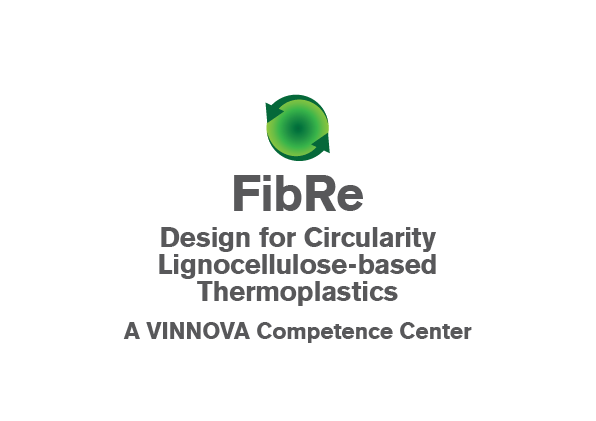Conducting polymers-modified wood composites
In this project, we used different conducting polymers to impregnate the wood. Our goal is to create a pathway for studying the nano/microscopic structure of the conductive wood and the interactions between the wood components and the conducting polymer matrix. . In detail, we mainly focus on the difference of crystallinity and the orientation of […]
Multi scale modeling of the delignification kinetics during kraft cooking
The kraft process is today the dominant industrial technology for the production of pulp from wood.In this process, wood chips are boiled with chemicals in order to dissolve lignin, hemicellulose andextractives. The process itself contains several complex mass transport mechanisms, where thechemicals are to be transported into the wood chip and then further into the […]
HEALIX

This project is about development of novel wound dressing materials and we are making cellulose nanofiber hydrogels from wood as raw material.
Ex situ and in situ advanced electron microscopy of enzymatic action for biomass tailoring and transport paths in conducting fibres and yarns
The structure of wood is complex with many components. As new cellulose-based materials and devices are to be developed and optimized it is crucial to understand the material microstructure of wood and also the properties of its individual microstructural constituents. Electron microscopy offers a unique capability for site specific imaging, diffraction and spectroscopy with high […]
Plasticization and partial depolymerization of lignocellulose-based materials

This project is a part of the competence center FibRe. This particular PhD student project aims to plasticize the lignin in the cell walls. The first part will be to extract lignin from wood and wheat straw, and to evaluate how different plasticizers affect the material properties. This will then be extrapolated to lignocellulose-based fibers.
Polysaccharide Monooxygenases (LPMOs) for Advanced Nanocellulose Materials
LPMOs (lytic polysaccharide monooxygenases) are oxidative enzymes that enhance cellulose fibrillation by introducing charged carboxyl groups onto the cellulose surfaces in aqueous reaction conditions. The use of LPMOs in production of nanocelluloses could reduce the need of hazardous chemicals and facilitate more environmentally friendly processes. The aim of this subproject is to produce recombinant LPMOs […]
Hållbara isoleringsmaterial för efterisolering av byggnader
Projektets huvudsakliga syfte är att utveckla teknik som kan bidra till att förbättra energieffektiviteten i de stora hyreshus som byggdes på 1960- och 1970-talet och bidra till att uppnå detta på ett hållbart sätt. Ambitionen är att utveckla ett isoleringsmaterial som är 100% biobaserat och återvinningsbart via kartongåtervinningen och därmed bidra till omställningen till en […]
Assessment of the homogeneity of chemical modifications aimed for thermoplasticisation of cellulosic fibres
The strong driving force behind the sustainable biomaterial-based society is to replace the fossil fuel-based materials with renewable resources to for example address the climate change. Thermoplastic polymer products are used on a daily bases in every household and they need to possess the properties such as being ductile and formable. However, cellulosic materials do […]
Bio-based binders for molded cellulose fibers
Natural binders are inexpensive, biodegradable, environmentally friendly and renewable, but usually form weaker bonds and slightly harder to apply. The objective of the project is to develop and optimize the process of using various plant polysaccharides as binder for holocellulose fibers and cellulose nanofibrils (CNF). The selected polysaccharides are further functionalized to improve interfacial adhesion […]
A new bio-based wood adhesive
One of the obstacles to easy recycling of wood composites is the thermosetting adhesives used in their production. Increasing the recyclability of composites could be achieved by developing bio-based bonding materials that will decompose under specific conditions. Bio-based adhesives such as those based on starch and microfibrillated cellulose have been demonstrated to form strong bonds […]
A new sustainable route to polysaccharide hydrogel formation for medical and cosmetic applications
Hydrogels are an extremely versatile class of material, and have found relevance in cosmetic, medical, pharmaceutical, and industrial processes. A hydrogel has a low solid content, often comprising at least 90% water. Although hydrogels are increasingly used in cosmetics and drug manufacture, the production process is far from sustainable, relying on fossil-based polymers and chemical […]
LTU infrastructure to be upgraded as part of EU-project BIOMAC

Nano-structured bio-based materials (NBMs) offer solutions to many of the challenges that society faces today. However, only a small number of such materials are currently commercially available. BIOMAC (European Sustainable BIO-based nanoMAterials Community) is a Horizon2020 project that works to facilitate a collaborative ecosystem for the development, testing and upscaling of NBMs and bio-based products […]

